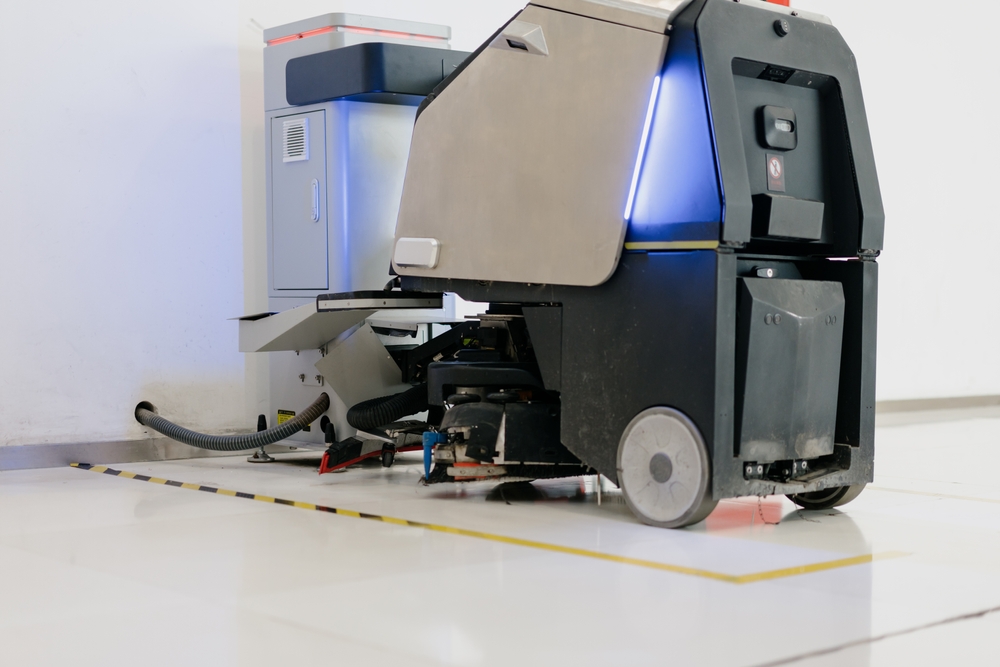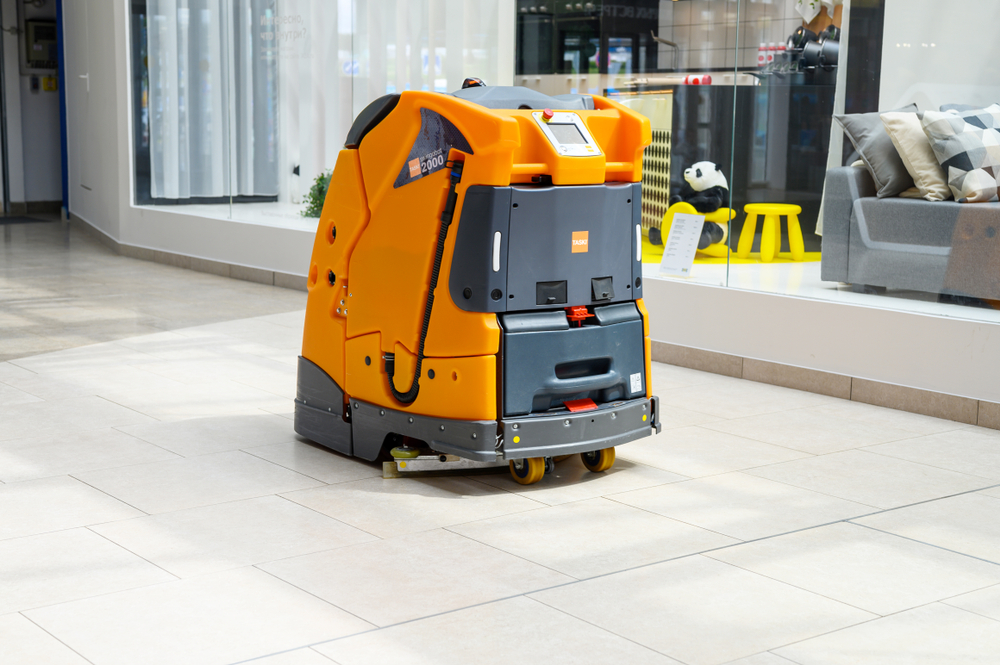The integration of robotic technologies has become a cornerstone for enhancing efficiency and productivity in the manufacturing industry and beyond. Among these technological advancements, industrial robot vacuums have emerged as a pivotal tool, offering a unique blend of precision and reliability through automation.
This article delves into the core applications and the various types of robot vacuums, examining their key advantages and limitations, and sheds light on the market size. It provides a comprehensive understanding of how these robotic vacuums are impacting the manufacturing sector, making operations not only more efficient but also more adaptable to the changing demands of the industry going into 2024 and beyond.
The key applications and use cases of industrial robot vacuums in manufacturing
Industrial robot vacuums have become more prevalent in modern manufacturing, transcending their basic function of cleaning to contribute significantly to overall operational efficiency. Their varied applications highlight their versatility and importance in different manufacturing contexts.
Maintaining clean production environments
Industrial robot vacuums play a pivotal role in ensuring production spaces remain free from debris and dust, a necessity in industries where cleanliness is critical, such as in pharmaceutical and electronics manufacturing.
Enhancing safety and reducing hazards
By automating the cleaning process, robot vacuums help minimize the risk of accidents and injuries, especially in areas with heavy machinery, excessive dust, or hazardous materials. Examples of these environments include metal casting or tile production.
Increasing operational efficiency
The ability of robot vacuums to operate autonomously and continuously helps reduce downtime for cleaning, thus boosting overall productivity. Human capital can be reallocated to other value-adding tasks.
Quality control
Consistent cleaning by these robots ensures a controlled environment, vital for maintaining quality in manufacturing processes. This contributes to improvements in machine operation and in the products themselves.
Customized cleaning solutions
Some industrial robot vacuums are specifically designed to handle certain types of waste or operate in particular environments, providing specialized cleaning solutions tailored to various manufacturing requirements. For example, cleanroom environments have much higher standards for industrial equipment compared to other industries. These standards must be adhered to.
What vacuum robot types exist?
The world of industrial robot vacuums is diverse, encompassing various types designed to meet different needs within the manufacturing sector. Understanding these types helps in selecting the right vacuum for specific manufacturing environments.
Autonomous mobile vacuums
Autonomous mobile vacuums are equipped with sensors and navigation systems, allowing them to move independently around a facility. They are ideal for large spaces and can be programmed to clean specific areas at designated times. This specialized navigation technology means that these robots tend to be a more expensive option.
Stationary robotic cleaners
Unlike their mobile counterparts, stationary robotic cleaners are fixed in one place and are often used for cleaning specific equipment or areas within a manufacturing plant. While they don’t have the added cost of the navigation equipment, these robotic cleaners will always be fixed to a stationary location.
Specialized material vacuums
Designed for handling specific types of debris or waste materials, specialized material vacuums are tailored to the unique needs of certain manufacturing processes, such as dealing with hazardous materials or fine particulate matter. Expect these vacuums to be at the high-end of the cost spectrum.
Each type of industrial robot vacuum offers distinct benefits, and the choice often depends on the specific requirements of the manufacturing environment, including the size of the area, the nature of the debris, and the level of human-robot interaction desired.
Key advantages of vacuum robots

Industrial robot vacuums bring a host of advantages to the manufacturing sector, driving efficiency and enhancing operational capabilities. The key benefits include:
Increased productivity
By automating the cleaning process, robot vacuums free up human workers to focus on more complex tasks, thereby increasing overall productivity.
Consistent cleaning quality
Robot vacuums maintain a consistent level of cleanliness, which is particularly important in industries where even minor contamination can have significant consequences.
Cost-effectiveness
Over time, the use of robot vacuums can lead to cost savings by reducing the need to apply manual labor to these tasks and minimizing downtime associated with cleaning.
Flexibility and adaptability
Robot vacuums can be programmed to clean at specific times and adapt to different cleaning needs, making them a flexible solution for various manufacturing environments.
Enhanced safety
Automating cleaning tasks, especially in hazardous or hard-to-reach areas, reduces the risk of accidents and injuries for human workers.
Limitations of automated vacuums
Despite their advantages, industrial robot vacuums also have some limitations that should be considered:
Initial investment
The upfront cost of purchasing and integrating robot vacuums can be significant, especially for small or medium-sized enterprises. Costs for a single robot can range from a few thousand dollars (USD) to upwards of $100,000.
Maintenance and repair
Like all mechanical systems, robot vacuums require regular maintenance and can incur repair costs. As relatively specialized equipment, OEMs typically perform maintenance after the sale.
Limitations in functionality
While highly efficient, robot vacuums may not be able to handle every type of cleaning task, especially those requiring intricate human judgment or dexterity. Like many robots, vacuum systems are best positioned to take on well-defined and somewhat repetitive tasks.
Market size
The market for robotic vacuum cleaners has shown impressive growth, with its valuation standing at USD 4.27 billion in 2022. Looking ahead, the market is projected to expand at a compound annual growth rate (CAGR) of 21.89% from 2023 to 2029. This robust growth trajectory indicates that the industry is set to reach a market size of approximately USD 17.07 billion by the end of the period. This trend underscores the increasing adoption and reliance on automated cleaning solutions in various sectors, reflecting their growing importance in modern operational strategies.
Key factors driving this growth include the rising demand for automation, advancements in robotic technology, and the ongoing need for efficient and safe cleaning solutions in industrial settings. This trend is expected to continue, offering ample opportunities for manufacturers and innovators in this space.
Industrial robot vacuums represent a step forward in manufacturing efficiency and safety. Their diverse applications, advantages, and the growing market demonstrate their critical role in modern industrial operations.
What’s next?
You may be ready to take the next step toward improving your cleaning operations, but where do you start?
The HowToRobot platform connects buyers of automation with a variety of suppliers in a streamlined, easy-to-use environment.
Post your project on HowToRobot today for free, and begin receiving offers from vetted, relevant automation vendors from our supplier network.

